This English painter active in the first half of the 19th century was a portraitist, watercolourist and engraver, also the author of numerous miniatures.
The neo-Gothic and neo-Renaissance taste appeared in England with artists such as Richard Parkes Bonington (1802-1828) who revisited the history of ancient France by introducing, for example, the figures of Henry III or Francis I in genre scenes.
In France, troubadour-style painting drawing its subjects from the history of the Middle Ages and the Renaissance experienced a notable craze under the Restoration and up until the Revolution of 1848. This small canvas, imbued with a melancholic charm, is part of this neo-Renaissance taste so popular in the first half of the 19th century.
This small canvas imbued with a melancolic charm, is part of the neo-Renaissance taste known as "Troubadour" so popular in the first half of the 19th century. The two protagonists are turned towards us, the young woman with her gaze bathed in sadness is presented from the front and the very young man who was hugging his mother turns his expressive face three-quarters towards the painter as if he had just called out to him. In the background of the painting, we can see the tools of a sculptor who can be imagined as the husband and absent father of the two models depicted.
Oil on paper mounted on canvas.
A small tear in the paper required restoration that was completely invisible from the front but explained the piece on the back of the canvas.
Old frame.



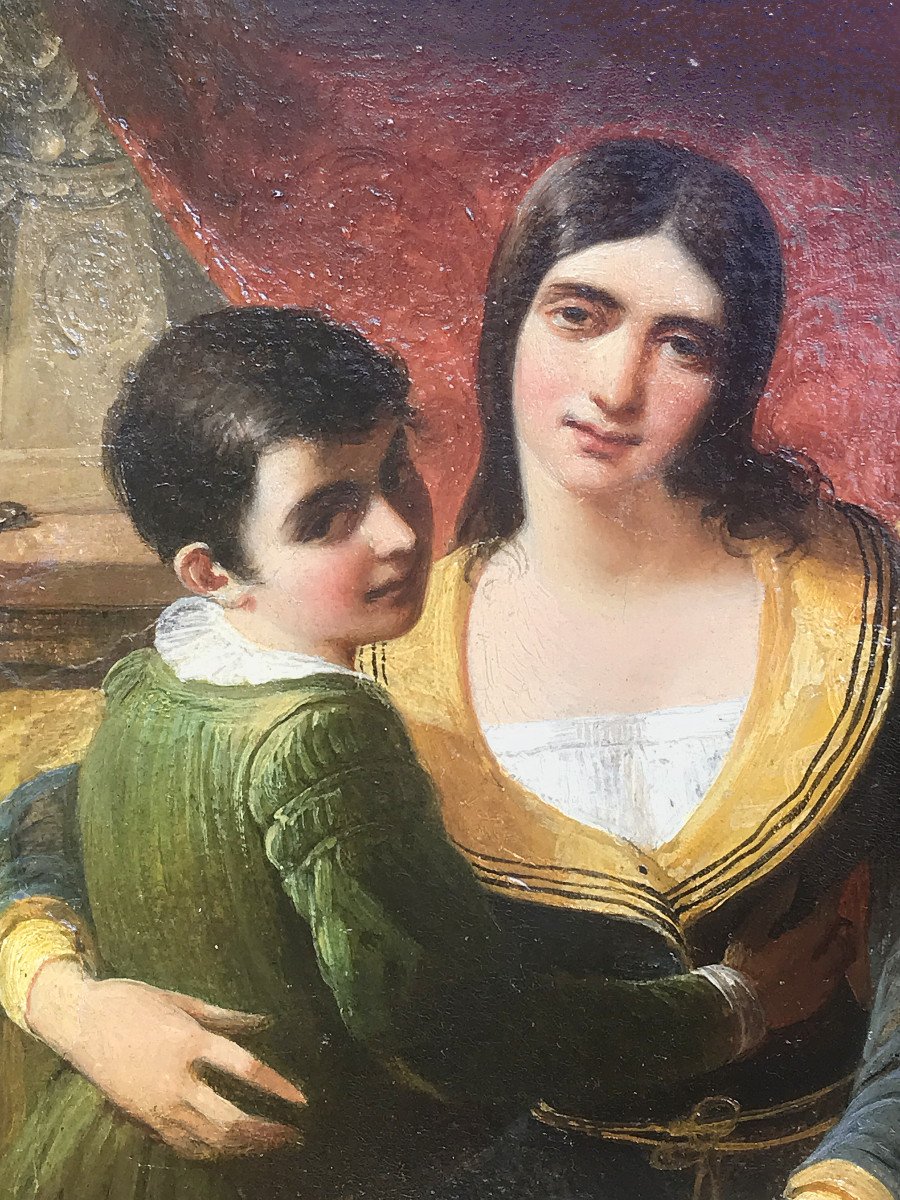












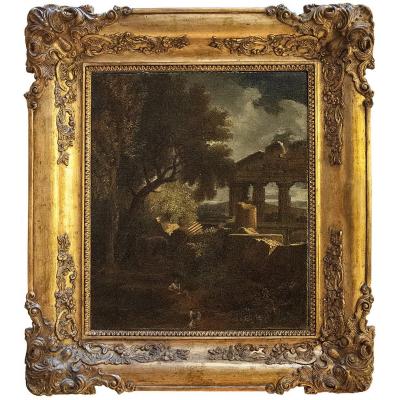


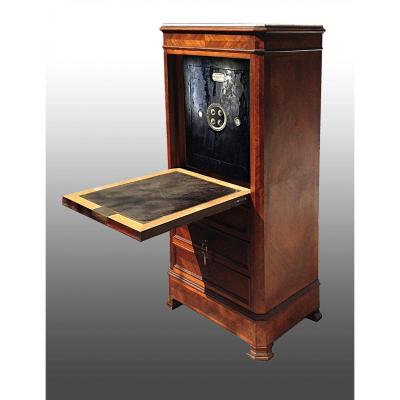
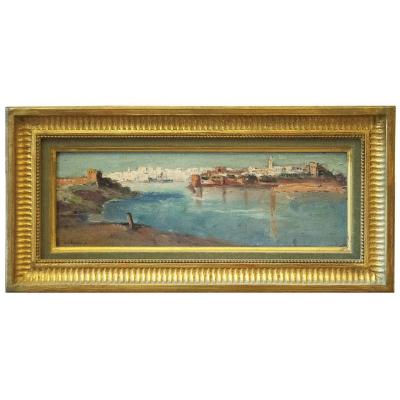


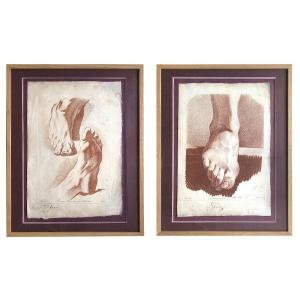

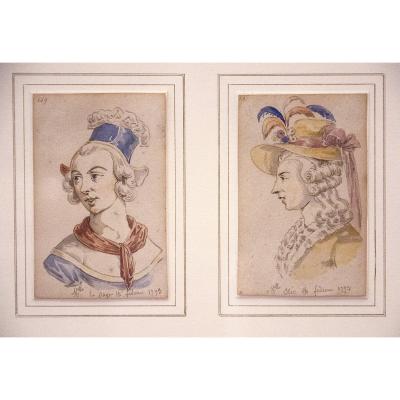


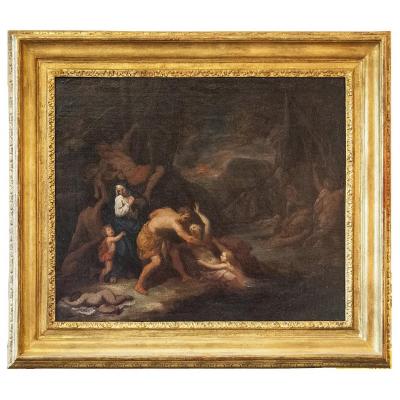

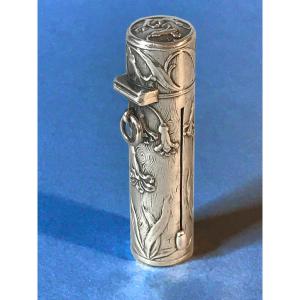








 Le Magazine de PROANTIC
Le Magazine de PROANTIC TRÉSORS Magazine
TRÉSORS Magazine Rivista Artiquariato
Rivista Artiquariato